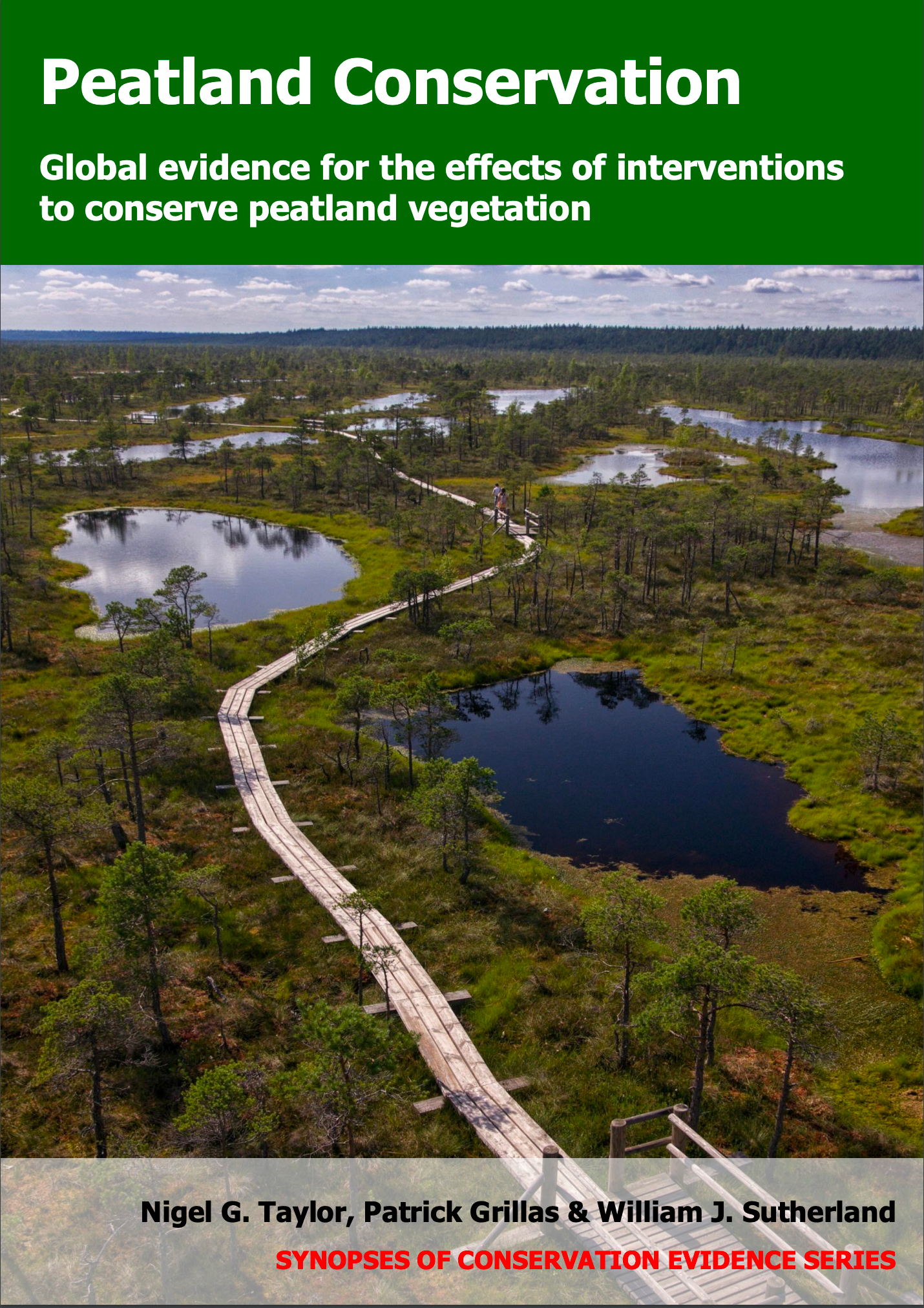Background information and definitions
Naturally, most peatlands do not burn often. Bogs and tropical peat swamps may only burn every few centuries (Lindsay et al. 2011; Page & Hooijer 2016). Some fens may burn more often, perhaps annually in parts of North America (Middleton et al. 2006).
Frequent, intense, uncontrolled wild fires may be damaging to peatland vegetation that is not adapted to cope with them. Along with logging and climate change, peatland drainage is a key factor increasing the amount of damaging fire in peatlands (Turetsky et al. 2014; Page & Hooijer 2016). Drained peatlands may be more likely to burn and can burn more intensely (deeper into the peat) when they do (Wösten et al. 2008). Raising the water table to rewet the surface peat, for example by building dams, may combat this threat.
Key peatland types where this action may be appropriate: bogs, fens/fen meadows, tropical peat swamps.
Related actions: rewetting alone, without a link to fire prevention; clear/remove vegetation to prevent wild fire; build fire breaks; increase ‘on the ground’ protection, including fire fighting teams.
Lindsay R., Birnie R. & Clough J. (2011) Burning. IUCN UK Peatland Programme Briefing Note No. 8.
Middleton B., Holsten B. & van Diggelen R. (2006) Biodiversity management of fens and fen meadows by grazing, cutting and burning. Applied Vegetation Science, 9, 307–316.
Page S.E. & Hooijer A. (2016) In the line of fire: the tropical peatlands of South East Asia. Philosophical Transactions of the Royal Society B, 371, 20150176.
Turetsky M.R., Benscoter B., Page S., Rein G., van der Werf G.R. & Watts A. (2014) Global vulnerability of peatlands to fire and carbon loss. Nature Geoscience, 8, 11–14.
Wösten J.H.M., Clymans E., Page S.E., Rieley J.O. & Limin S.H. (2008) Peat-water interrelationships in a tropical peatland ecosystem in southeast Asia. Catena, 73, 212–224.






)_2023.JPG)














